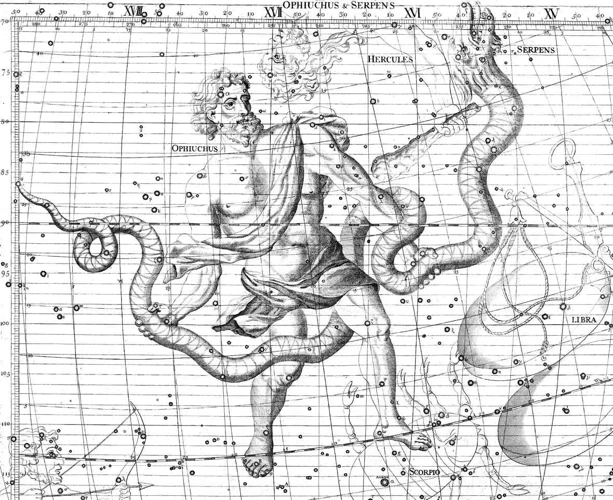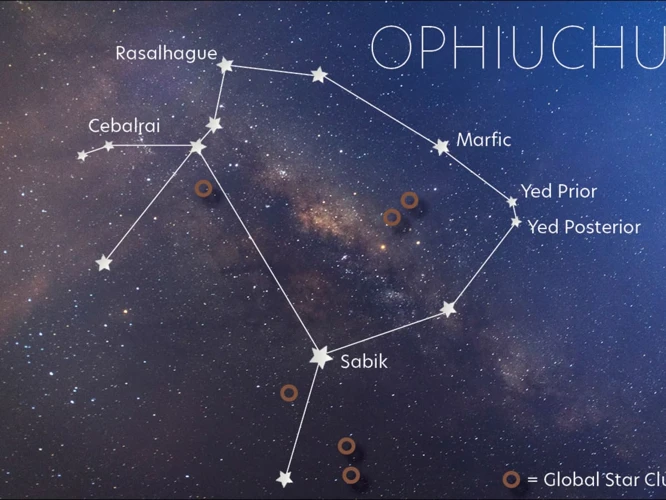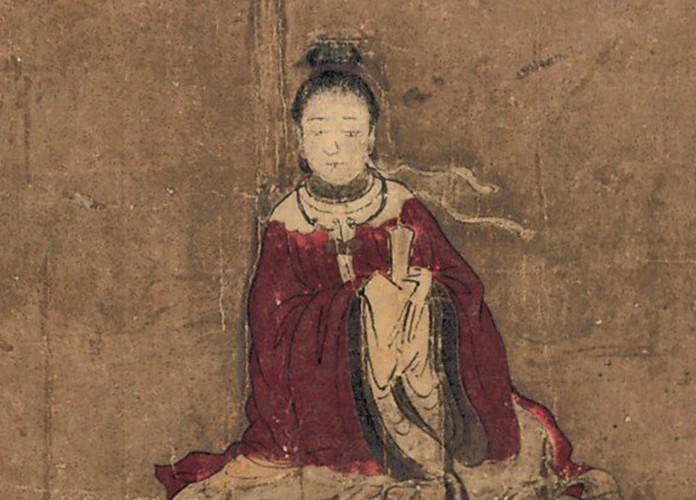Mazu, the enigmatic and revered goddess of the sea in Chinese mythology, has captured the imagination of people for centuries. With a rich history and deep cultural significance, Mazu holds a prominent place in the hearts of believers and coastal communities alike. Her origin stories and legends are shrouded in mystique, while her role as the protector of seafarers and guardian of coastal communities has earned her unwavering devotion. Through elaborate festivals and celebrations, as well as her influence on arts and literature, Mazu’s legacy continues to transcend boundaries and gain global recognition. Join us as we delve into the captivating world of Mazu, exploring her symbols, role, and enduring impact on Chinese culture and beyond.
Contents
- 1. Origins of Mazu
- 2. Symbols and Depictions
- 3. Mazu’s Role and Significance
- 4. Mazu and Cultural Beliefs
- 5. Global Recognition and Legacy
- 6. Conclusion
-
Frequently Asked Questions
- 1. Why is Mazu considered the goddess of the sea?
- 2. What is the significance of Mazu’s birthplace?
- 3. What are some other names for Mazu?
- 4. Are there any male deities associated with the sea in Chinese mythology?
- 5. How is Mazu depicted in art?
- 6. What are some traditional rituals associated with the worship of Mazu?
- 7. Is Mazu worshipped outside of China?
- 8. What influence did Mazu have on Chinese literature?
- 9. How does Mazu’s cult influence the fishing industry?
- 10. Why has Mazu’s cult gained global recognition?
- References
-
Frequently Asked Questions
- 1. Who is Mazu?
- 2. What are the origins of Mazu?
- 3. Are there any legends or stories associated with Mazu?
- 4. How is Mazu worshipped and cultivated?
- 5. What symbols and depictions are associated with Mazu?
- 6. What is Mazu’s role and significance?
- 7. How does Mazu influence festivals and celebrations?
- 8. How has Mazu influenced arts and literature?
- 9. Is Mazu’s legacy recognized globally?
- 10. How does Mazu continue to impact the modern world?
- References
- Read More
1. Origins of Mazu

The origins of Mazu, the revered goddess of the sea in Chinese mythology, can be traced back to the Song Dynasty in the 10th century. According to legend, Mazu was born in 960 AD on the island of Meizhou in Fujian province. She was originally known as Lin Mo, the daughter of a humble fishing family.
Legends and stories surrounding Mazu’s birth vary, but one popular account tells of her exceptional powers and compassion from a young age. It is said that Mazu possessed the ability to predict storms and save sailors from perilous situations. Her ability to harness mercury-like communication intelligence allowed her to communicate with the sea spirits, ensuring the safety of fishermen at sea.
Worship and cultivation of Mazu began in her hometown of Meizhou and quickly spread to other coastal regions in China. Her reputation as a protector of seafarers and a benevolent deity led to the construction of numerous temples in her honor. One of the most famous is the Meizhou Mazu Temple, which attracts pilgrims from all over the world to pay their respects to the goddess.
The origins and rise of Mazu as a revered deity reflect the deep connection between Chinese communities and the sea. This connection is further entrenched in the symbols and depictions associated with Mazu, which we will explore in the next section.
1.1. Legends and Stories
1.1. Legends and stories
The legends and stories surrounding Mazu are as vast and diverse as the sea itself. One popular tale tells of Mazu’s extraordinary birth. According to this legend, Mazu’s mother dreamed of a divine figure who told her that she would give birth to a child with extraordinary powers. Shortly after, a blue light descended from the heavens into the sea, and Lin Mo was born. She exhibited remarkable abilities from a young age, displaying a deep understanding of the sea and its creatures.
Another fascinating legend recounts Mazu’s encounter with a group of stranded fishermen. It is said that during a violent storm, Mazu appeared to the fishermen in the form of a young girl. With a single wave of her hand, she calmed the raging sea and guided the fishermen back to shore. Her compassionate and kind-hearted nature endeared her to seafarers, who saw her as their guardian and protector.
Mazu’s stories also intertwine with other mythical beings and creatures. One such tale involves her encounter with the mythical Kunpeng bird, a giant bird with the wingspan of a thousand miles. In this story, Mazu harnessed her powers to transform the Kunpeng into a fish, allowing it to swim freely in the sea.
These captivating legends and stories serve to highlight Mazu’s role as a deity intimately connected to the sea and as a source of hope and protection for sailors. They have been passed down through generations, reflecting the enduring reverence and fascination for Mazu in Chinese culture.
1.2. Worship and Cultivation
Worship and cultivation of Mazu has been an integral part of Chinese coastal communities for centuries. Mazu is revered as a deity who protects seafarers and ensures their safe journeys.
Temples dedicated to Mazu can be found in various coastal regions, serving as sacred spaces for worship and offering a place for believers to seek her blessings. These temples are adorned with symbolic imagery that represents Mazu’s connection to the sea and her divine powers. One such symbol is the depiction of her riding on a dragon or a phoenix, symbolizing her authority and command over the sea and the sky.
Worshippers often make offerings to Mazu, ranging from fruits and flowers to incense and candles. They pray for her protection and guidance, seeking her intervention during times of danger and uncertainty. Mazu’s devotees believe that by showing their reverence and loyalty, they will receive her divine blessings and support.
Mazu’s influence extends beyond China, with immigrant communities around the world also displaying deep devotion to the goddess. The worship and cultivation of Mazu have become an essential part of their cultural identity, preserving ancient beliefs and practices passed down through generations. Mazu’s influence can also be seen in various art forms, literature, and festivals that celebrate her power and benevolence.
As we delve deeper into Mazu’s significance and explore her role as the protector of seafarers and guardian of coastal communities, we will uncover the symbolism and depictions associated with her divine persona.
2. Symbols and Depictions

Symbols and depictions associated with Mazu in Chinese mythology mirror her role as the goddess of the sea. Maritime imagery plays a significant part in representing her power and connection to the ocean. Mazu is often depicted wearing a flowing blue robe, symbolizing the vastness of the sea. Her attire is adorned with elaborate designs resembling crashing waves, representing her ability to control and calm the waters.
One prominent symbol associated with Mazu is the divine accessories she carries. These include a magical lotus flower that grants her the power to traverse the sea, a ruyi scepter signifying her ability to bring blessings and fulfill wishes, and a pearl symbolizing her connection with the moon and its influence on the tides.
The colors blue and white are heavily linked to Mazu’s depiction, representing purity and the vastness of the sea. These colors are often seen in statues and artworks dedicated to her, reinforcing her divine presence and maritime dominion.
The symbolism and depictions associated with Mazu reflect her commanding role as the protector of seafarers and the guardian of coastal communities in Chinese mythology. In the next section, we will explore Mazu’s significant role and her enduring significance in the Chinese culture.
2.1. Maritime Imagery
In depictions of Mazu, maritime imagery plays a significant role in symbolizing her connection to the sea. Artists often portray her standing on a cloud or riding a dragon, both symbols of her ability to traverse the vastness of the ocean. She is frequently depicted wearing a flowing robe, symbolizing her command over the tides and currents. Mazu is also often shown holding a staff or a signal flag, representing her guidance and protection for seafarers.
One of the most recognizable symbols associated with Mazu is the floating pearl, which represents her divine ability to bring clarity and light in the midst of darkness. This symbol signifies hope and guidance for those navigating treacherous waters. Another common element is the lotus flower, which represents purity and enlightenment. In many artistic representations, Mazu is shown standing on a lotus, emphasizing her divine role as a protector and guardian.
The portrayal of Mazu’s mermaid-like appearance is another aspect of her maritime imagery. She is often depicted with a fish tail, mermaid-like hair, and adorned with various aquatic creatures. This physical depiction further emphasizes her connection to the sea and her ability to move effortlessly through its depths.
Through these maritime symbols and imagery, Mazu’s role as the goddess of the sea is visually depicted and celebrated. In the next section, we will explore the divine accessories associated with Mazu and their significance in her representation.
2.2. Divine Accessories
As a revered goddess, Mazu is often depicted with various divine accessories that symbolize her powers and role in Chinese mythology. One of the most prominent accessories associated with Mazu is her headdress. The headdress is typically adorned with intricate designs, including symbolic colors that represent her connection to the sea and the heavens.
In addition to her headdress, Mazu is often depicted holding a lotus flower in her hand. The lotus flower symbolizes purity and enlightenment in many cultures. Mazu’s association with the lotus further emphasizes her divine and compassionate nature.
Another significant divine accessory often seen in depictions of Mazu is her magical scepter. The scepter represents her authority and power over the sea. It is believed that Mazu can command the waves and calm the storms with a mere wave of her scepter.
These divine accessories not only enhance Mazu’s visual representation but also hold deeper symbolism within Chinese mythology. They serve as reminders of her role as the protector of seafarers and the guardian of coastal communities, which we will explore in the next section.
3. Mazu’s Role and Significance

Mazu’s primary role is that of a protector of seafarers. Throughout Chinese history, countless sailors have relied on her divine guidance and intervention to navigate treacherous waters. Mariners would pray to Mazu for safe voyages and offer her offerings as a token of gratitude for their safe return. Mazu’s reputation for safeguarding seafarers has made her an immensely popular deity among fishermen and sailors, with her influence extending beyond China’s shores.
As the goddess of the sea, Mazu also assumes the vital role of the guardian of coastal communities. She is believed to have the power to control the tides and calm stormy seas, thus protecting coastal areas from natural disasters and flooding. Mazu’s devotees view her as a benevolent figure who nurtures and cares for coastal communities, ensuring their safety and prosperity. Her presence is particularly prominent in coastal villages and cities, where temples dedicated to her provide a place for worshippers to seek solace and protection.
Mazu’s role as the protector of seafarers and guardian of coastal communities originates from the deep reverence and respect Chinese people have for the sea. The influence of Mazu extends beyond her religious significance, permeating various aspects of Chinese culture and beliefs, as we will explore in the next section.
3.1. Protector of Seafarers
As the Protector of Seafarers, Mazu’s role holds immense significance in Chinese mythology and coastal communities. She is revered as the deity who safeguards sailors and fishermen during their treacherous journeys at sea.
Throughout history, countless tales and legends have recounted instances where Mazu intervened to rescue distressed sailors from the brink of disaster. Sailors would often pray to Mazu before embarking on their voyages, seeking her divine protection and guidance. It is believed that Mazu had the power to calm storms, navigate through treacherous waters, and provide safe passage to those who called upon her.
Coastal communities have celebrated and honored Mazu as their patron deity for generations. Mazu temples, adorned with intricate carvings and vibrant decorations, are a common sight along the coast of China. These temples serve as gathering places for worshippers to pay their respects, make offerings, and seek solace in Mazu’s watchful presence.
The devotion to Mazu as the Protector of Seafarers extends beyond China, as other Asian countries with strong maritime traditions also revere her. Mazu’s legacy transcends cultural boundaries and she continues to be seen as a symbol of hope and comfort for sailors around the world.
In the following section, we will delve into another aspect of Mazu’s role—that of being the guardian of coastal communities.
3.2. Guardian of Coastal Communities
As the guardian of coastal communities, Mazu holds a pivotal role in the lives of those who depend on the sea for their livelihoods. Her presence is particularly significant in regions where fishing and maritime activities are central to the local economy and culture.
Mazu’s protection extends beyond the physical safety of seafarers. She is believed to safeguard coastal communities from natural disasters, including storms and typhoons that can wreak havoc on their homes and livelihoods. Devotees turn to Mazu for guidance and blessings, praying for her intercession during times of peril.
The reverence for Mazu is exemplified in the numerous rituals and ceremonies conducted by coastal communities. These can range from elaborate processions to simple offerings at temples dedicated to the goddess. Mazu statues, often adorned in colorful and intricate garments, become focal points of worship and adoration.
The worship of Mazu serves as a unifying force among coastal communities, fostering a sense of solidarity and shared identity. The celebration of Mazu festivals, such as the grand Tian Hou Gong Festival that attracts thousands of visitors, allows people to come together in joyful commemoration of their cultural heritage.
Mazu’s role as the guardian of coastal communities goes beyond mere protection from physical harm. She embodies the collective spirit and resilience of these communities, providing solace, hope, and a sense of belonging even in the face of uncertain and often treacherous seas.
4. Mazu and Cultural Beliefs

Mazu holds a significant place in Chinese cultural beliefs, with her worship and festivals playing a vital role in coastal communities. Let’s explore two prominent aspects of her cultural influence:
The festivals dedicated to Mazu are vibrant and colorful affairs, attracting large crowds of devotees and tourists alike. One of the most renowned celebrations is the Mazu Pilgrimage, held annually in Taiwan. The pilgrimage involves a lively procession where a statue of Mazu is carried from her temple to designated pilgrimage sites along the coastline. The event is filled with music, dance, and various cultural performances, showcasing the devotion and reverence for Mazu.
Another significant festival is the Mazu Cultural Festival, held in Meizhou, Fujian province. During this celebration, people gather to honor Mazu with offerings, prayers, and elaborate rituals. It is a time when communities come together to express their gratitude for her protection and seek blessings for safe journeys at sea.
Mazu’s influence goes beyond religious rituals and extends to the realms of art and literature. She has inspired countless poems, songs, and stories that depict her bravery, compassion, and the awe-inspiring power of the sea.
In Chinese opera, Mazu is often portrayed as a central character in performances, symbolizing her role as a guardian and protector. Her depiction typically includes her signature attire, adorned with divine accessories such as a heavenly crown and a golden rod.
Artworks featuring Mazu frequently showcase maritime imagery, emphasizing her association with the sea. Paintings and sculptures depict her standing on a cloud or riding a dragon-headed ship, demonstrating her ability to navigate the waters with ease.
Mazu’s cultural beliefs and celebrations not only serve as a means of connecting with the spiritual realm but also as a way to celebrate and appreciate the sea’s vital role in the lives of coastal communities.
4.1. Festivals and Celebrations
Festivals and celebrations play a crucial role in the veneration of Mazu and are an integral part of Chinese culture. Each year, devotees and curious onlookers gather to participate in various festivities dedicated to the goddess.
One of the most significant festivals honoring Mazu is the Meizhou Mazu Pilgrimage, held annually in Meizhou. This grand event draws thousands of pilgrims who embark on a journey to pay their respects to Mazu at her temple. The procession is mesmerizing, featuring ornately decorated boats adorned with vibrant colors and intricate designs. The atmosphere is filled with devotion and excitement as participants chant hymns and offer prayers to the goddess.
Another popular celebration is the Mazu Cultural Festival, held in various coastal cities across China. This vibrant and lively event showcases the rich maritime heritage of the region and pays homage to Mazu’s role as the protector of seafarers. Various activities are organized during this festival, including dragon boat races, traditional performances, and street processions. These festivities not only bring communities together but also serve as a way to express gratitude to Mazu for her benevolence and protection over the years.
Through these festivals and celebrations, the reverence for Mazu is perpetuated and passed down through generations. The cultural significance of these events is deeply ingrained in coastal communities, where Mazu continues to be revered as the guardian of seafarers and the symbol of hope and protection against the perils of the sea.
4.2. Influence on Arts and Literature
Mazu’s influence extends beyond religious worship and festivals to the realms of arts and literature. Throughout history, numerous artists and writers have been inspired by her mythical stature and captivating stories.
In the realm of visual arts, Mazu is often depicted in paintings and sculptures, adorned in elaborate regalia and garlands of flowers. These representations symbolize her divine presence and emphasize her role as the goddess of the sea. Paintings of Mazu can be found in temples, depicting her in different iconic poses and surrounded by maritime elements like ships, waves, and sea creatures.
Poetry and literature have also been greatly influenced by Mazu. Many poems and literary works evoke her name and persona, praising her benevolence and seeking her divine protection. These literary works often explore the themes of bravery, adventure, and the unpredictable nature of the sea, drawing inspiration from the legendary stories surrounding the goddess.
- Tang Xianzu, a renowned Ming Dynasty playwright, incorporated Mazu’s character into his plays, infusing them with religious and spiritual elements.
- Guan Hanqing, another prominent playwright from the Yuan Dynasty, also featured Mazu in his works, highlighting her role as a protector and patroness of sailors.
The influence of Mazu can also be seen in other art forms such as music, dance, and even traditional opera, where her legends are brought to life on stage, captivating audiences with her mythical presence.
Through these artistic expressions, Mazu’s legacy continues to thrive, capturing the imagination of people and reminding them of the power and significance of the sea in Chinese culture.
5. Global Recognition and Legacy

The global recognition and legacy of Mazu extend far beyond the borders of China. Mazu’s influence has transcended time and geographical boundaries, captivating the hearts and minds of people around the world.
A notable event that highlights Mazu’s global recognition is the Mazu Pilgrimage. This annual pilgrimage attracts thousands of devotees from various countries who gather to pay homage and seek blessings from Mazu. The pilgrimage often spans several days and covers significant distances, demonstrating the unwavering devotion of believers.
This enduring legacy is not limited to religious practices. Mazu’s influence can also be seen in the realms of art, literature, and popular culture. Artists have depicted the goddess in various mediums, capturing her ethereal beauty and powerful presence. Mazu’s portrayal in literature showcases her role as a guardian and protector, inspiring readers with tales of courage and resilience. Her influence even extends to modern media, with films, television series, and video games featuring Mazu as a central figure.
Mazu’s legacy is not confined to Chinese communities alone. As seafaring cultures around the world encounter challenges and seek protection, the devotion to Mazu has spread across continents. Mazu temples can now be found in countries with significant Chinese diaspora, such as Taiwan, Malaysia, Singapore, and even as far as the Americas and Europe.
The global recognition and enduring legacy of Mazu serve as a testament to her significance as a deity and symbol of protection. As her devotees continue to honor and celebrate her, Mazu remains a powerful and beloved figure in Chinese mythology and beyond.
5.1. Mazu Pilgrimage
The Mazu pilgrimage is a significant cultural event that gathers devotees from all over the world to pay homage to the revered goddess of the sea. It is the largest religious pilgrimage in Taiwan and has been recognized as an intangible cultural heritage by UNESCO. The pilgrimage takes place annually from the 23rd to the 28th day of the third lunar month, coinciding with Mazu’s birthday.
The pilgrimage embarks on a journey from the Dajia Jenn Lann Temple in Taichung and concludes at the Chaotian Temple in Beigang. Over the six-day period, participants travel a distance of approximately 400 kilometers on foot, accompanied by vibrant processions, floats, and traditional music. The atmosphere is electric, with devotees chanting prayers and lighting incense along the way, expressing their faith and seeking blessings from Mazu.
The pilgrimage is a test of devotion and endurance, attracting millions of participants each year. Many devotees undertake the long and arduous journey barefoot as a demonstration of their unwavering faith. Along the route, various pit stops provide essential services such as free food, water, medical assistance, and rest areas for participants. The pilgrimage serves as a platform for communal bonding, spiritual reflection, and a display of cultural heritage.
Not only does the Mazu pilgrimage continue to unite believers, but it also has significant socio-economic impacts on the communities it passes through. Local businesses and vendors thrive during the pilgrimage, offering a variety of products and services to cater to the needs of the participants. The pilgrimage has become a symbol of solidarity, cultural identity, and religious devotion, attracting not only local devotees but also tourists and visitors who are fascinated by the grandeur and significance of the event.
The Mazu pilgrimage is a testament to the enduring legacy and cultural significance of Mazu. It showcases the deep-rooted beliefs and devotion that Mazu inspires in her followers, and continues to be a celebrated tradition that brings together people from all walks of life.
5.2. Mazu in the Modern World
In the modern world, Mazu continues to hold a significant place in the hearts of believers and coastal communities. While her worship remains deeply rooted in traditional practices, her influence has extended beyond China and gained global recognition.
Mazu’s presence and impact can be seen in various aspects of modern society. From a cultural perspective, Mazu’s festivals and celebrations have become major events that draw local communities and tourists alike. The Mazu Pilgrimage, for example, is a renowned annual event in Taiwan, attracting millions of devotees from around the world.
Beyond festivals, Mazu’s cultural significance is also evident in the arts and literature. Many artists and writers draw inspiration from Mazu’s stories and symbols, incorporating them into their works. Paintings, sculptures, and even operas depicting Mazu and her maritime adventures are celebrated as expressions of Chinese heritage and mythology.
Mazu’s influence extends beyond her native land. With the migration of Chinese communities around the world, the worship of Mazu has spread to countries such as Taiwan, Malaysia, Singapore, and even as far as the United States and Canada. Mazu temples can now be found in many coastal cities, serving as focal points for Chinese communities to maintain their cultural and spiritual connections to the goddess.
Mazu’s status as a guardian and protector of seafarers has gained recognition beyond the realm of mythology. In modern times, there have been instances where seafarers and fishermen claim to have witnessed Mazu appearing in times of danger, lending support and ensuring their safe passage. These accounts, while subjective, demonstrate the enduring belief in Mazu’s protective powers.
Mazu’s presence in the modern world is a testament to the lasting impact of her mythology and cultural significance. As individuals and communities continue to navigate the complexities of contemporary life, Mazu remains a symbol of hope, protection, and spiritual connection to the sea.
6. Conclusion

Mazu, the goddess of the sea in Chinese mythology, holds a significant place in Chinese culture and beyond. Her origins, stemming from a humble fishing family, have transformed her into a revered deity worshipped by coastal communities. Mazu’s legends and stories, showcasing her extraordinary powers and compassion, have captivated the imaginations of believers for centuries.
The symbols and depictions associated with Mazu, such as maritime imagery and divine accessories, further emphasize her role as the protector of seafarers and guardian of coastal communities. Mazu’s significance extends beyond religious worship, influencing various aspects of Chinese culture, including festivals, celebrations, arts, and literature.
The global recognition and legacy of Mazu are evident in the iconic Mazu pilgrimage, drawing pilgrims from all corners of the world to pay homage to the goddess and seek her blessings. Mazu’s influence can be seen in the modern world, where her story continues to resonate with people, inspiring artists, writers, and cultural enthusiasts alike.
Through Mazu, we witness the power of mythology to shape beliefs and influence communities. The enduring appeal and reverence for Mazu highlight the deep-rooted connection between humanity and the sea, showcasing the timeless themes of protection, guidance, and compassion.
In exploring the origins, symbols, role, and cultural legacy of Mazu, we gain a deeper understanding of the profound impact of mythological figures on the human experience. Mazu’s story and her representation as the protector of seafarers remind us of the inherent power and mystery of the sea, a force that continues to inspire awe and respect.
As we conclude this exploration of Mazu, may her timeless presence continue to guide and protect those who venture into the vast expanse of the sea, and may her legacy endure for generations to come.
Frequently Asked Questions

1. Why is Mazu considered the goddess of the sea?
Mazu is considered the goddess of the sea due to her ability to predict and control oceanic conditions, saving sailors from storms and guiding them to safety.
2. What is the significance of Mazu’s birthplace?
Meizhou, Mazu’s birthplace, holds great symbolism as it represents her connection to the sea and the origins of her divine powers.
3. What are some other names for Mazu?
Mazu is also known by various names, including Tianhou, A-Ma, and Matzu, depending on the regional dialect and cultural context.
4. Are there any male deities associated with the sea in Chinese mythology?
While Mazu is the primary deity associated with the sea in Chinese mythology, there are also male deities like Yuqin Shuishen who are believed to have jurisdiction over specific aspects of maritime affairs.
5. How is Mazu depicted in art?
Mazu is often depicted as a young woman dressed in flowing robes, holding a magical sphere or a ruyi scepter, symbolizing her authority over the sea.
6. What are some traditional rituals associated with the worship of Mazu?
Festivals and processions are common rituals associated with the worship of Mazu. These events often involve elaborate parades, temple ceremonies, and boat processions to show gratitude and seek her blessings.
7. Is Mazu worshipped outside of China?
Yes, Mazu’s worship has spread beyond China, primarily due to the migration of Chinese communities. Mazu temples can be found in Taiwan, Southeast Asia, and other regions with Chinese diaspora.
8. What influence did Mazu have on Chinese literature?
Mazu’s influence on Chinese literature can be seen in numerous poems, stories, and plays that celebrate her divine powers and the protection she offers to seafarers.
9. How does Mazu’s cult influence the fishing industry?
The worship of Mazu is deeply intertwined with the fishing industry. Fishermen often seek her blessings for a bountiful catch and safe voyages, and her temples serve as important community centers for fishing communities.
10. Why has Mazu’s cult gained global recognition?
Mazu’s cult has gained global recognition due to her enduring legacy as the protector of seafarers and her association with maritime culture, resonating with people across different cultures and backgrounds.
References
Frequently Asked Questions

1. Who is Mazu?
Mazu is a goddess in Chinese mythology who is revered as the goddess of the sea.
2. What are the origins of Mazu?
Mazu’s origins can be traced back to the 10th century during the Song Dynasty in China, but she became widely worshipped during the Ming Dynasty in the 16th century.
3. Are there any legends or stories associated with Mazu?
Yes, there are many legends and stories associated with Mazu. One popular legend tells of how Mazu protected and rescued fishermen during a violent storm at sea.
4. How is Mazu worshipped and cultivated?
Mazu is worshipped through elaborate rituals and ceremonies held in temples dedicated to her. Devotees also cultivate a deep sense of gratitude and reverence towards Mazu through prayers and offerings.
5. What symbols and depictions are associated with Mazu?
Mazu is often portrayed with maritime imagery, such as riding on a dragon or sitting on a lotus throne. She is also depicted with divine accessories, such as a golden pagoda and a magical peach.
6. What is Mazu’s role and significance?
Mazu is regarded as the protector of seafarers, providing safety and guidance to those at sea. She is also considered the guardian of coastal communities, ensuring their prosperity and well-being.
7. How does Mazu influence festivals and celebrations?
Mazu is prominently honored during various festivals and celebrations throughout the year. These events often involve vibrant processions, elaborate ceremonies, and the burning of incense as offerings.
8. How has Mazu influenced arts and literature?
Mazu has inspired numerous works of art, including paintings, sculptures, and poems. Many famous literary works in China also mention Mazu and her powers.
9. Is Mazu’s legacy recognized globally?
Yes, Mazu’s legacy is recognized globally, particularly through the Mazu Pilgrimage, where devotees travel to honor her at various pilgrimage sites. Mazu’s influence can also be seen in the growing popularity of Chinese culture worldwide.
10. How does Mazu continue to impact the modern world?
Mazu continues to be worshipped and revered by millions of people, both in China and in Chinese communities around the world. Her teachings of compassion, protection, and guidance resonate with people seeking solace and strength in challenging times.







